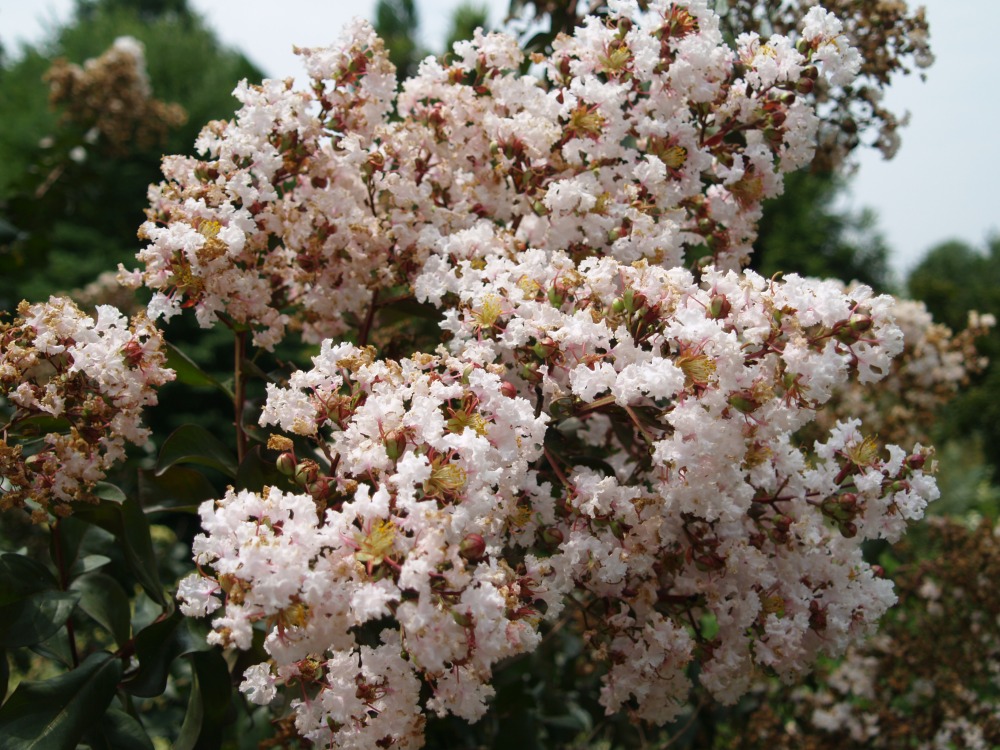I’ve just returned from my annual trek through the southeast, visiting nurseries to see what’s growing for the autumn and spring. Over two weeks our group of weary travelers rested in a new hotel every night, and after nearly four thousand road miles (and too many others bouncing through nurseries) it’s wonderful to return home.
The weather in the south was hot, but each day was a few degrees cooler than in Virginia, so it was not quite so miserable. Nurseries we visited have been suffering through the recession for several years, and many of our friends are struggling for survival, cutting inventory levels, and wondering what they need to grow in this new economy. Many thousands of Japanese hollies and junipers have been discarded, unsold and overgrown. Today, flowering plants and colorful foliage are selling, and dozens of new hydrangeas, crapemyrtles (below), and roses are being introduced.
I’ve tested many of these in my garden, and several weeks ago I planted a handful of newly introduced summer blooming panicled and smooth hydrangeas (below). When I returned yesterday I walked the garden in the heat of late afternoon, and several of the new shrubs were severely wilted and distressed. Though rainfall has been adequate for normal July temperatures, one hundred and five is far from normal, and immediate irrigation was desperately needed. I don’t think that I can wait for thunderstorms that are promised for tomorrow.
The garden’s established plants are dry, but they have been grown without coddling and will tolerate much longer periods without water than the newcomers. Even drought tolerant plants need some moisture, so I’ll set up a sprinkler to give some small measure of relief until it rains. A soaker hose is much more efficient, but I have too much ground to cover, and with storms forecast the next few days I’ll hope that the rain is substantial enough to soak more deeply.
Despite the heat there’s plenty of blooms in the garden, and over the next few days I’ll work to catch up. Now, I have work to do, setting up the sprinkler and pulling weeds that have popped up over the past two weeks. Oh well, at least I’ll sweat off a few of the pounds I gained on the trip.
Dave….Enjoy your reports from outlying nurseries. Reminded me of a recent post of yours regarding Japanese maples. You planted a very nice one for us in a landscaped area in our front yard. It’s doing very well after 4-5 years. I just noticed two little “volunteers” sprouting through the mulch about 10 and 20 feet away from the main tree. (Birds, maybe?) I’ve protected them with wire, and water occasionally. At some point, I’d like to place them in a pot, with an eye toward a full transplant in a few more years. I’m thinking late fall might be the best time to do this, and would use potting soil for ease of root development. Any thoughts or guidance?
Japanese maple seedlings are quite easy to transplant when they are small. The best time to move them is after their leaves drop in autumn, and then they can be easily dug to capture most of the roots and planted directly into the ground or into a pot.